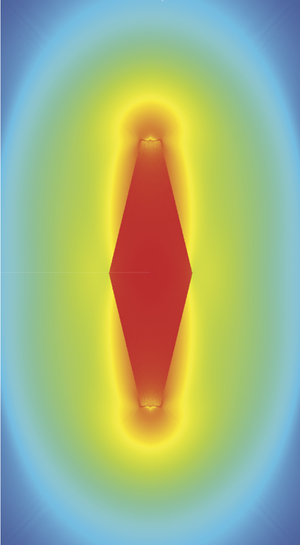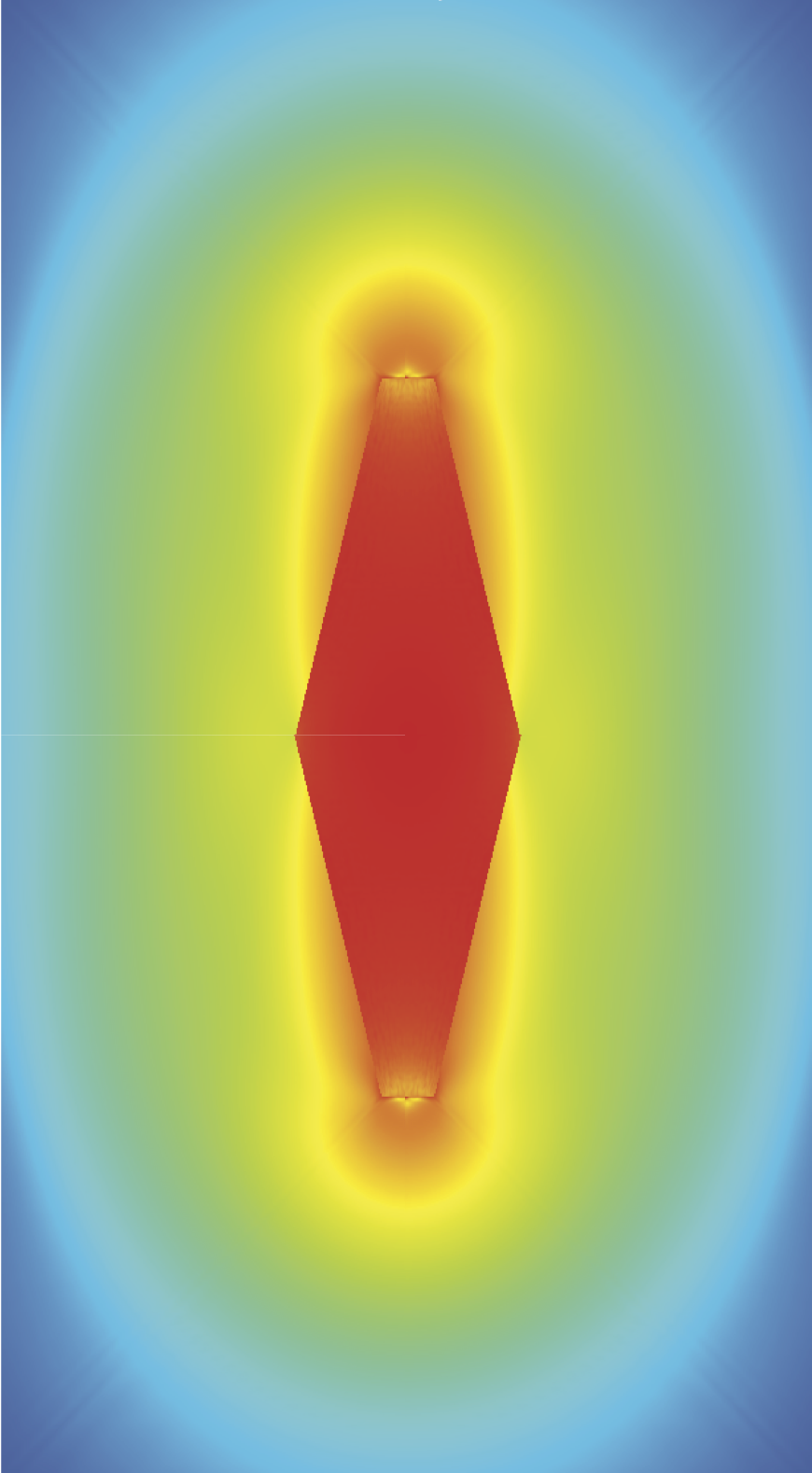Water Doesn’t Always Go with the Flow
If you press your hand down into a tub of water, you don’t expect the liquid to spring back like a solid. But researchers have now observed such springiness in water mixed with a more viscous liquid by vibrating an object at frequencies around 20 gigahertz, as they report in Physical Review Letters. The team vibrated submerged gold nanoparticles and found that the springiness in the liquid affected the vibrations. This so-called viscoelasticity has been seen in more complex fluids like cornstarch-water mixtures. But for simple liquids, researchers have only used indirect techniques, except with very thin, constrained samples. The results suggest sensitive mass sensing measurement techniques and may also improve understanding of nanoparticles’ interactions with fluids at the nanoscale.
When you push an object through water, the liquid molecules rearrange themselves and flow around it. Move the object fast enough, however, and instead of rearranging, the molecules will bunch up and push back like a spring. In complex fluids like cornstarch mixed with water, this so-called “non-Newtonian” behavior makes for some fun classroom physics demonstrations. So far, however, researchers have only observed such viscoelasticity in simple liquids with indirect methods such as ultrasound or by confining thin liquid films between two sliding surfaces.
But confining the liquid changes the organization of the molecules. To directly observe the natural viscoelastic properties of free-flowing simple liquids, John Sader of the University of Melbourne and the California Institute of Technology in Pasadena and his colleagues used a technique that Sader and others previously developed to study energy loss in vibrating nanoparticles [1].
The team took 100-nanometer-long gold nanoparticles that were bipyramidal in shape—resembling two pyramids connected at their bases—and placed them in solutions with a range of viscosities. The solutions consisted of water mixed with glycerol, also called glycerin, a highly viscous fluid. When the researchers hit the nanoparticles with a short laser pulse, the blast of energy caused each particle to repeatedly lengthen and contract, vibrating like a bell after being struck.
The light absorption of these particles depends sensitively on their dimensions. So the team tracked the vibrations by firing a second, weaker laser pulse with a variable delay following the first pulse, to measure the particles’ light absorption as it oscillated in time. They determined vibrational frequencies ranging from 20 to 23 gigahertz and found that the frequency increased as the glycerol fraction increased from 40% to 80%.
This result was surprising because increasing viscosity should slow down the motion and lead to lower vibrational frequencies. Instead, the team observed the opposite behavior in their data, which turned out to agree with a model incorporating viscoelasticity but not with a classical Newtonian model. According to the viscoelastic model, as the fluid viscosity increases, it acts more like a spring because it pushes back when deformed. When this spring interacts with the internal springiness of a vibrating nanoparticle, the combined effect is a stiffer spring, which vibrates at a higher frequency.
For more than a century, researchers have suspected this viscoelastic quality in all types of liquids but did not have the technology with which to test it directly, says Klaus Kroy of the University of Leipzig in Germany. He says this experiment nicely demonstrates “how science and technology play Ping-Pong together.”
Sader says that the increased vibrational frequencies found in the most viscous solutions could allow for a method for determining the precise mass of a nanosized particle, perhaps even a molecule, stuck to the gold particle, because the mass strongly affects the vibration frequency. Nanoparticles are also being studied in biomedical settings, for example as fluorescent detectors of biomolecules in tissues. Sader says the team’s work provides a better basis from which to study these interactions at the nanoscale.
Correction (30 December 2013): The text has been revised to clarify that there have been some demonstrations of viscoelasticity in simple fluids in the past using less direct techniques.
–Jessica Orwig
Jessica Orwig is a science writing intern at APS.
References
- M. Pelton, J. E. Sader, J. Burgin, M. Liu, P. Guyot-Sionnest, and D. Gosztola, “Damping of Acoustic Vibrations in Gold Nanoparticles,” Nature Nanotech. 4, 492 (2009)





